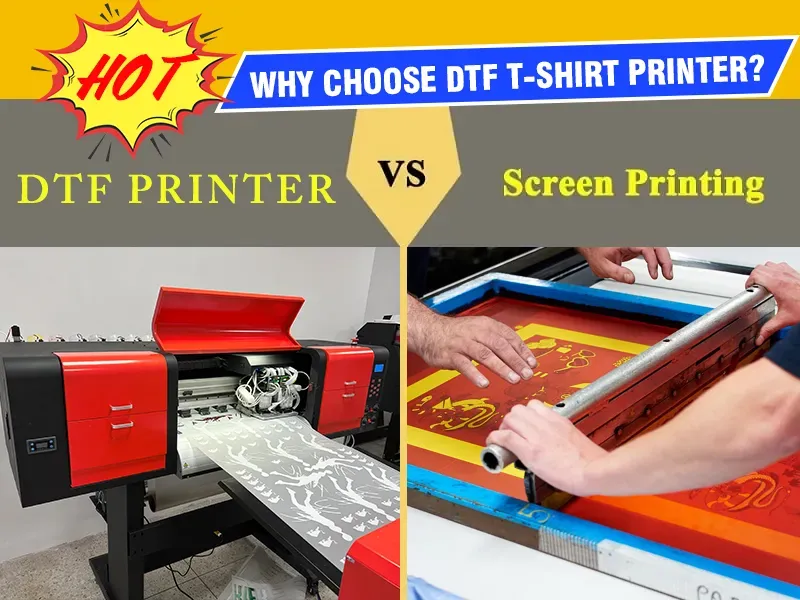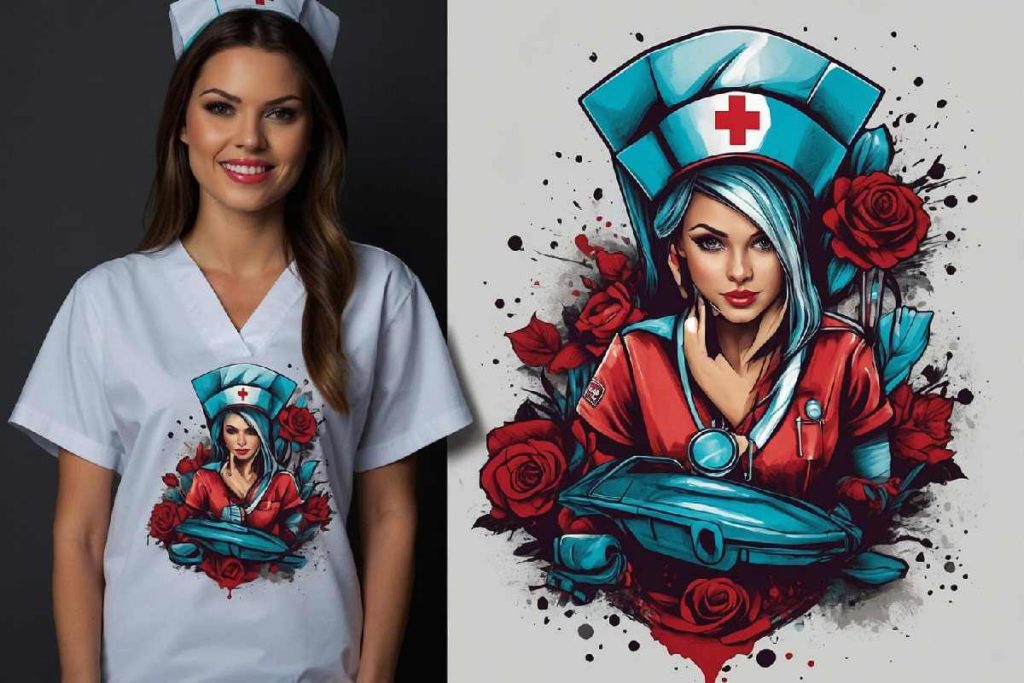When it comes to garment decoration, understanding the nuances of DTF vs Traditional Screen Printing is essential for making informed choices. These two popular printing techniques offer distinct advantages and disadvantages, with each catering to different needs and preferences. From exploring the differences between DTF and screen printing to evaluating factors such as cost, durability, and production speed, it’s clear that both methods have unique attributes. DTF printing benefits from modern technology, providing intricate designs and faster turnaround times, while traditional screen printing remains a go-to choice for large-scale orders due to its vibrant colors and established processes. In this exploration, we will delve deeper into the advantages of each method and help you determine which is best suited for your printing projects.
In the world of textile printing, the comparison between DTF and conventional screen printing reveals significant contrasts that can influence any business’s decision-making process. Often referred to as Direct to Film printing, DTF employs cutting-edge technology to produce high-quality and detailed garments, while the classical screen printing technique involves a more manual and labor-intensive approach. Both methods have their proponents, highlighting their respective advantages, such as the durability and color vibrance of traditional screen prints versus the quick output and flexibility of DTF printing. This overview will guide you through a detailed analysis of the strengths and weaknesses of these two prominent methods, enabling you to choose the optimal printing solution for your needs.
Understanding the Technological Differences Between DTF and Traditional Screen Printing
When comparing DTF and traditional screen printing, it’s crucial to understand the technological foundations of each method. DTF printing operates on an innovative approach, where designs are digitally printed onto a film before being heat-pressed onto the fabric. This advanced technique not only enables high-resolution graphics with intricate details but also enhances color vibrancy. In contrast, screen printing relies on a more labor-intensive technique that involves creating separate screens for each color in the design. This means that while DTF can handle complex graphics efficiently, traditional screen printing is better suited for simpler, more uniform designs.
The ability of DTF to produce multicolor designs without requiring multiple screens represents a significant shift in the printing landscape. This digital-first approach eliminates many logistical challenges faced in traditional methods, such as long setup times and complex color-matching processes. Thus, businesses can leverage DTF technology for rapid prototyping and customization, catering to evolving market demands much more flexibly than traditional screen printing can allow.
Exploring the Benefits of DTF Printing
DTF printing boasts several benefits that make it an appealing choice for garment decoration. First and foremost, its capacity to print on a wide range of materials, from cotton to polyester, without compromising quality opens doors for diverse applications in fashion and merchandising. This flexibility allows businesses to expand their product offerings and meet varied customer preferences with ease. Moreover, the printing process itself results in a soft finish that makes the garments comfortable to wear, a vital consideration for many customers today.
In addition to durability and flexibility, DTF printing typically comes with a lower initial investment, especially for small businesses or startups. Because traditional screen printing requires the creation of screens for each design, the upfront costs can escalate quickly. DTF eliminates these costs, providing small businesses an economical way to enter the custom printing market while ensuring they can offer high-quality products that customers will love.
Advantages of Traditional Screen Printing
Despite the advantages of DTF printing, traditional screen printing still holds significant appeal, particularly in specific contexts. For larger production runs, traditional screen printing can be far more economical due to lower per-unit costs once the initial setup is complete. The economies of scale make it the preferred choice for bulk orders, such as promotional garments or team uniforms, where uniformity and cost-efficiency are paramount.
Furthermore, traditional screen printing has been around for decades, leading to a well-established process that many printers are familiar with. The tactile quality of screen prints, combined with the ability to use specialty inks and textures, gives traditional screen printing a unique edge in creating bold, vibrant designs. For projects requiring durability and longevity, certain screen printing techniques and inks can outlast DTF prints, provided they’re applied correctly.
Cost Comparison: DTF vs Traditional Screen Printing
Cost considerations are critical when deciding between DTF and traditional screen printing, especially for businesses that need to balance quality and budget. DTF printing generally incurs lower setup costs for small batch jobs, positioning it as an ideal choice for companies that frequently need smaller quantities of customized items. This affordability allows brands to experiment with their designs without the fear of substantial financial loss.
However, as the order volume increases, traditional screen printing may offer greater value. The setup costs associated with screen printing become distributed over a larger number of units, thus lowering the cost per piece significantly. Businesses must weigh their production needs, considering both short-term projects and long-term design campaigns, to make the best financial decision for their unique situation.
Evaluating Print Durability Across Both Methods
Durability is a pivotal factor when selecting a printing method for apparel. DTF prints are well-regarded for their resilience; they can withstand multiple washes without fading or cracking, making them particularly suited for high-wear garments. This advantage is crucial for consumers seeking quality and longevity in their apparel, as frequent washing can often lead to rapid deterioration in print quality.
Conversely, the longevity of traditional screen prints can vary significantly based on the inks and application techniques used. High-quality inks can yield prints that resist wear and maintain vibrancy over time, but poorer quality inks may result in cracking or fading. Thus, while traditional screen printing has the potential for durability, it is vital for businesses to choose their printing partners wisely and ensure that they are using the best materials available to avoid quality issues.
Production Speed: Efficiency in DTF vs Traditional Screen Printing
Production speed can be a deciding factor in the choice between DTF and traditional screen printing. DTF printing typically allows for quicker turnaround times as it requires no setup of physical screens. This speed can be particularly advantageous for businesses that thrive on last-minute orders or one-off projects, as they can go from design to finished product in less time.
In contrast, traditional screen printing can lag due to the manual setup required for each design. Each color needs to be applied separately, leading to longer production cycles, especially for multi-colored designs. While this method excels in larger production volumes, its inefficacy in fast-paced environments can pose challenges for businesses that rely heavily on rapid fulfillment of customer orders. Assessing individual project timelines is essential for determining the best approach based on production speed.
Frequently Asked Questions
What are the main differences between DTF and traditional screen printing?
The main differences between DTF and traditional screen printing lie in their methods, costs, and material compatibility. DTF printing utilizes a film transfer technique ideal for intricate designs, while traditional screen printing uses individual screens for each color, best suited for larger runs of simple designs. DTF generally offers lower upfront costs for small orders, whereas screen printing becomes more cost-effective for bulk production.
What are the benefits of DTF printing compared to traditional screen printing?
DTF printing benefits include its ability to reproduce complex designs with fine details, compatibility with various fabric types, and lower setup costs for small runs. Additionally, DTF prints tend to have a longer lifespan without cracking or fading, making it a preferred choice for high-quality apparel.
What are the advantages of traditional screen printing over DTF printing?
Traditional screen printing advantages include vibrant color consistency and lower per-item costs for high-volume orders. It is ideal for large runs of simple designs, allowing businesses to benefit from economies of scale as initial setup costs are spread over multiple items.
How does the cost of DTF printing compare to traditional screen printing?
The cost of DTF printing is typically lower for small runs due to the absence of multiple screen setups. In contrast, traditional screen printing incurs higher initial costs but becomes more economical for larger orders, as its setup expenses are amortized over a greater quantity of items.
Which printing method offers better durability, DTF or traditional screen printing?
DTF printing generally offers better durability than traditional screen printing. DTF prints feature a smooth finish that withstands multiple washes without cracking or fading, whereas traditional screen prints may vary in durability based on the quality of inks used, potentially leading to wear over time.
What is the production speed comparison between DTF printing and traditional screen printing?
DTF printing usually has a faster production speed compared to traditional screen printing. The lack of time-consuming screen setups allows DTF to efficiently handle custom orders, while traditional screen printing’s manual processes can slow down delivery times, especially for multi-color designs.
| Factor | DTF Printing | Traditional Screen Printing |
|---|---|---|
| Technology and Methodology | Directly prints onto film; suitable for complex designs with fine details. | Involves creating individual screens for each color, best for simple designs. |
| Material Compatibility | Can print on various fabrics like cotton and polyester without compromising quality. | Requires specific inks for different materials, complicating the process. |
| Cost and Efficiency | Lower costs for small runs; quicker setup with no screens required. | Setup costs are spread over larger runs, making it more economical for bulk production. |
| Durability | Superior durability; prints maintain quality over multiple washes. | Durability varies based on ink quality; some prints may crack or fade. |
| Production Speed | Faster production times, especially for custom orders due to no screen setup. | Slower due to manual setup and multiple steps involved. |
Summary
DTF vs Traditional Screen Printing showcases the significant distinctions in printing methodologies. DTF printing is revolutionizing garment decoration with its efficiency, versatility, and suitability for intricate designs. In contrast, traditional screen printing is ideal for high-volume orders with less complexity. Ultimately, the choice between DTF and traditional screen printing depends on the needs of the business, whether it’s the flexibility of DTF or the cost-effectiveness of traditional methods for large quantities. Staying updated on these technologies can help businesses make the right printing decisions.



